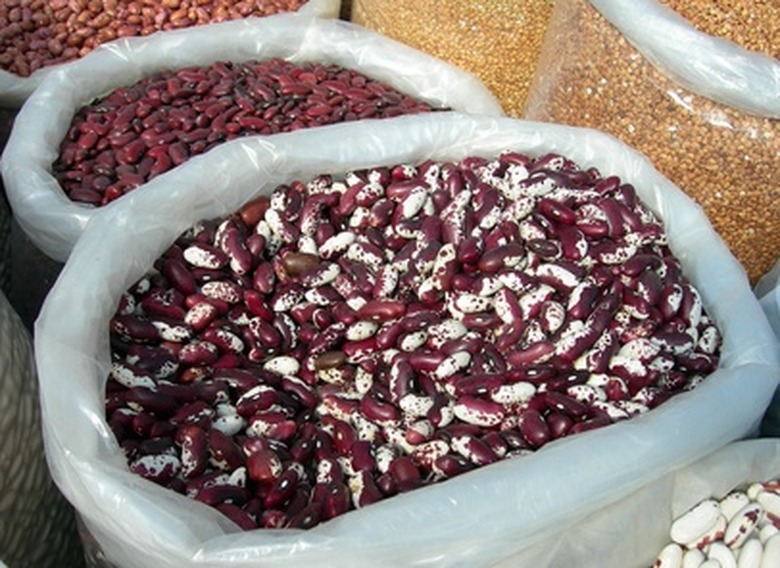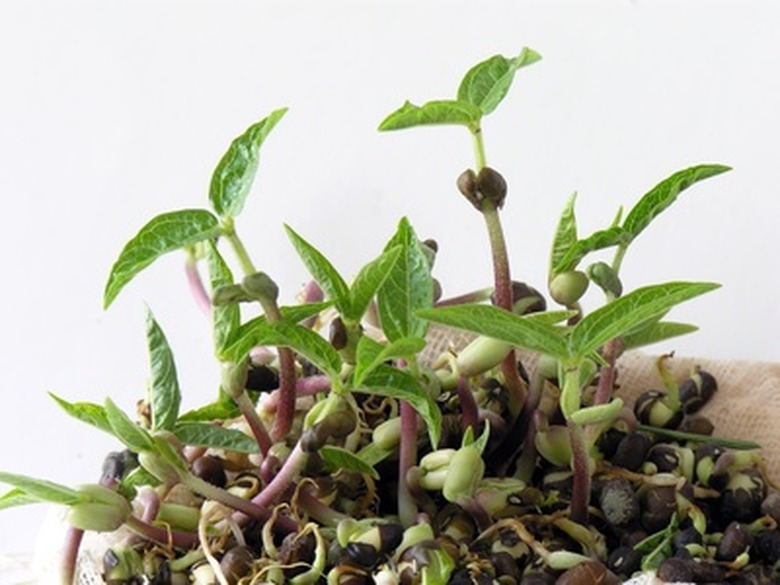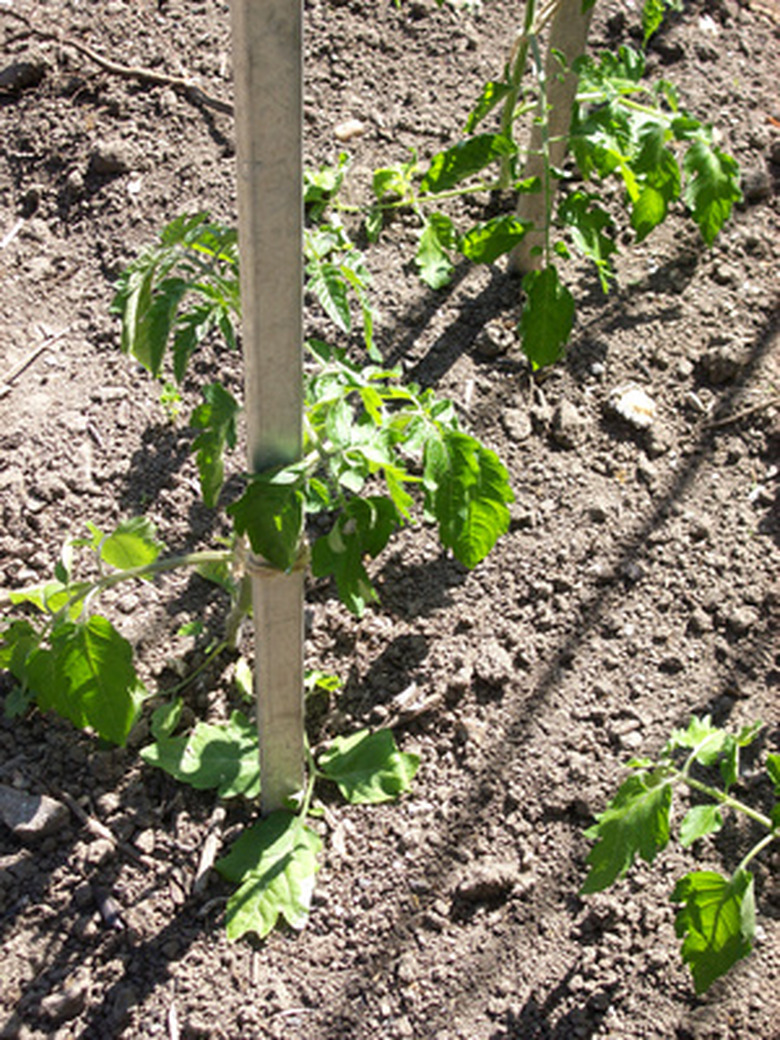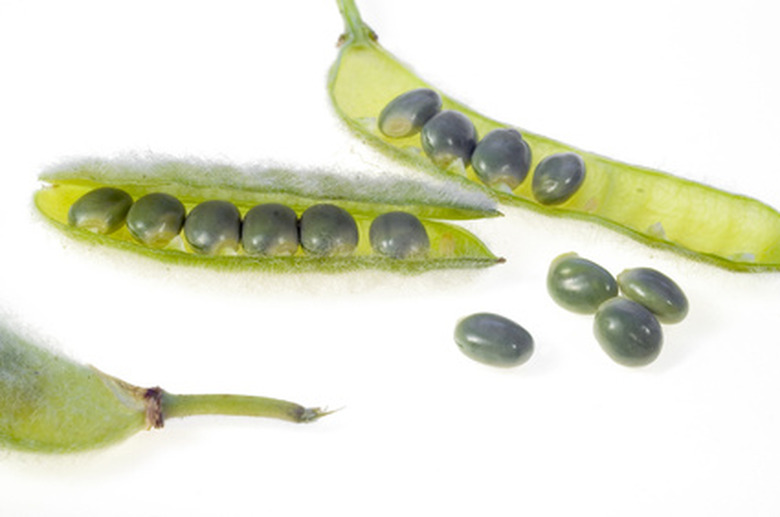Stages Of A Bean Plant
All types of bean plants undergo four stages of development as they mature, beginning with two stages of leaf development, blooming, and the filling of the bean pod. Varieties of beans include green snap beans, lima beans, chickpeas, horticultural beans, wax beans, dry beans, fava beans, garbanzo beans, soybeans and yardlong beans.
Unifoliate
The bean seed is planted in the soil and watered. The seed swells and bursts open, beginning the first stage of bean growth. This stage is known as the unifoliate stage. The unifoliate leaf is a single leaf that emerges from the bean seed planted in the soil. The cotyledon also emerges from the bean seed and provides nourishment to the new leaf. The cotyledon looks similar to the seed itself. This stage of growth occurs approximately 10 days after planting the bean seed.
- All types of bean plants undergo four stages of development as they mature, beginning with two stages of leaf development, blooming, and the filling of the bean pod.
- This stage of growth occurs approximately 10 days after planting the bean seed.
Trifoliate
The next stage of bean development is the addition of leaves to the stem of the plant. The leaf structure changes from one leaf to three nodes on the stem. The nodes unfold, forming three leaves on the stem of the bean plant. The trifoliate leaves no longer rely on the cotyledon for food but get nourishment from the sun's energy through the process of photosynthesis. The bean plant grows new trifoliate leaves every three days, eventually forming bushes or vines after 50 days.
Blossoms
After the development of the trifoliate leaves, blossoms appear at each leaf node but are enclosed by the leaves. Once the buds are formed, they emerge from the leaves within one day but remain closed for up to four days. Within six days from the formation of buds, blossoming occurs. The blossoms are visible outside the leaves and continue blooming for nine or ten days. The blossoms become the bean pods.
- The next stage of bean development is the addition of leaves to the stem of the plant.
- The blossoms are visible outside the leaves and continue blooming for nine or ten days.
Pods
It takes up to 10 days for all the blossoms to form full length bean pods. After the pod reaches its full length, the seeds inside the pods begin to ripen and grow. The seeds bulge in the pods as they mature and are ready to harvest at this point.
Allowing the bean pods to turn brown and the seeds to dry inside the pod produces dry beans that can be stored throughout the winter. Dried beans are also used to replant bean plants in the spring.




